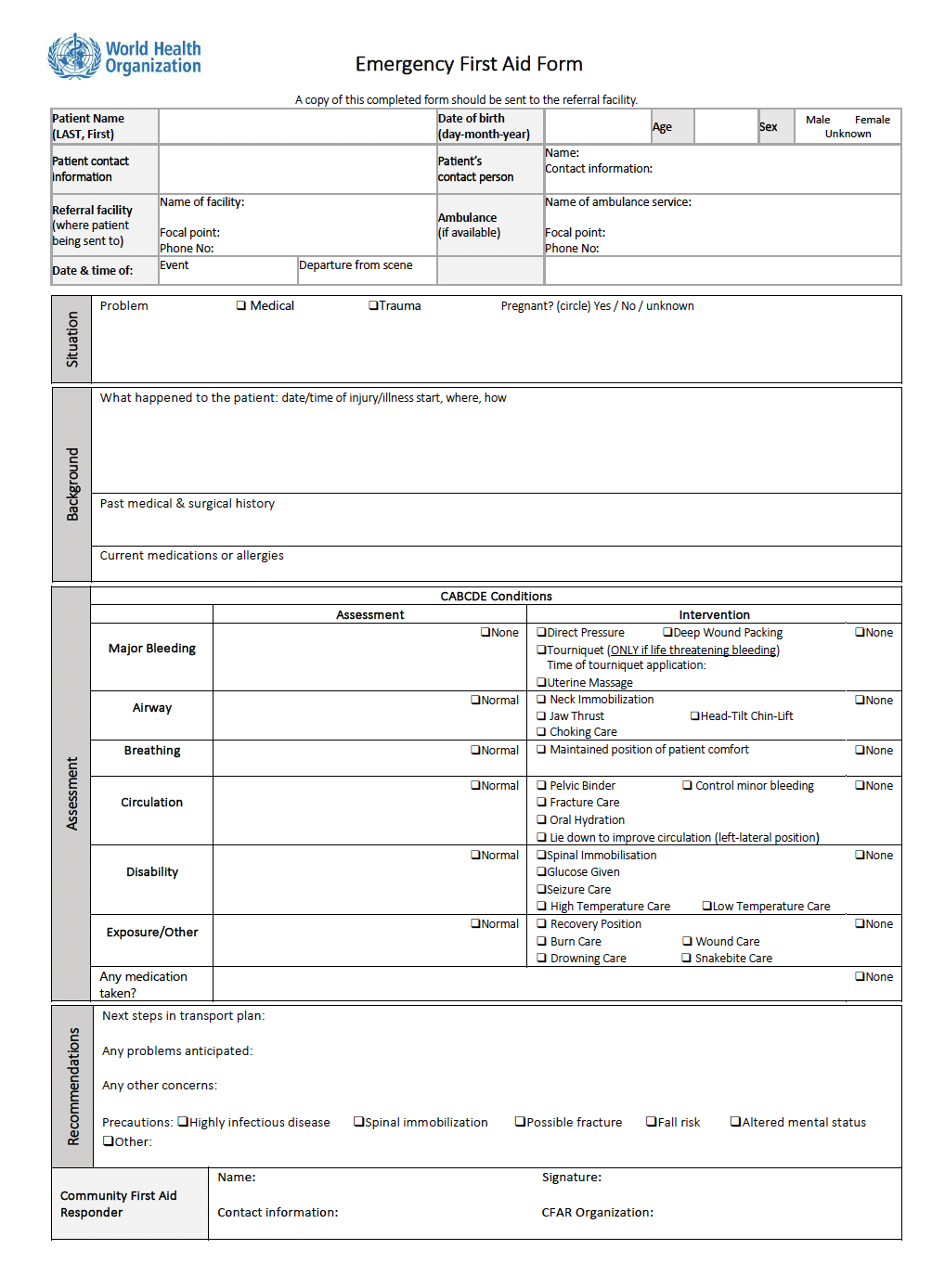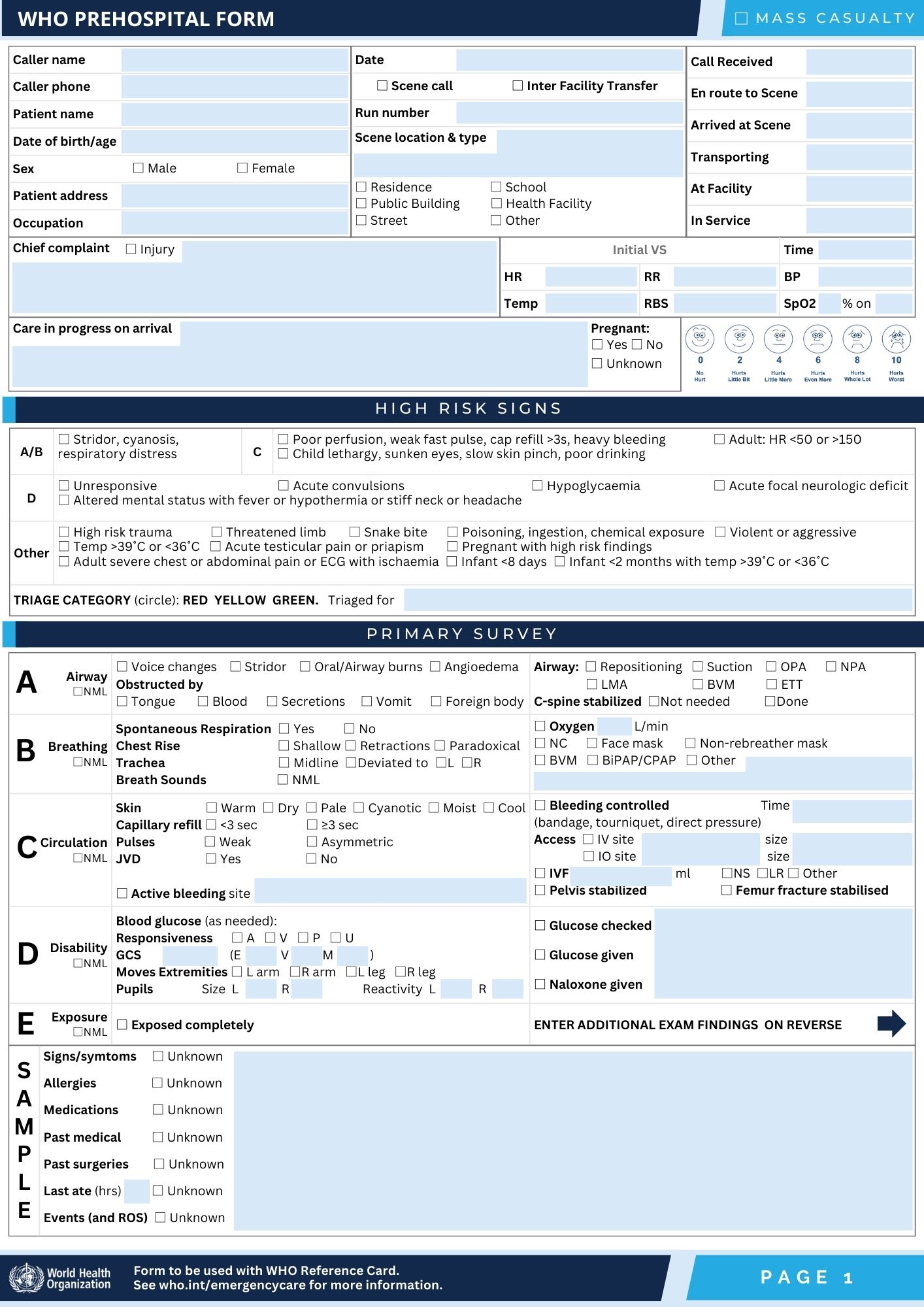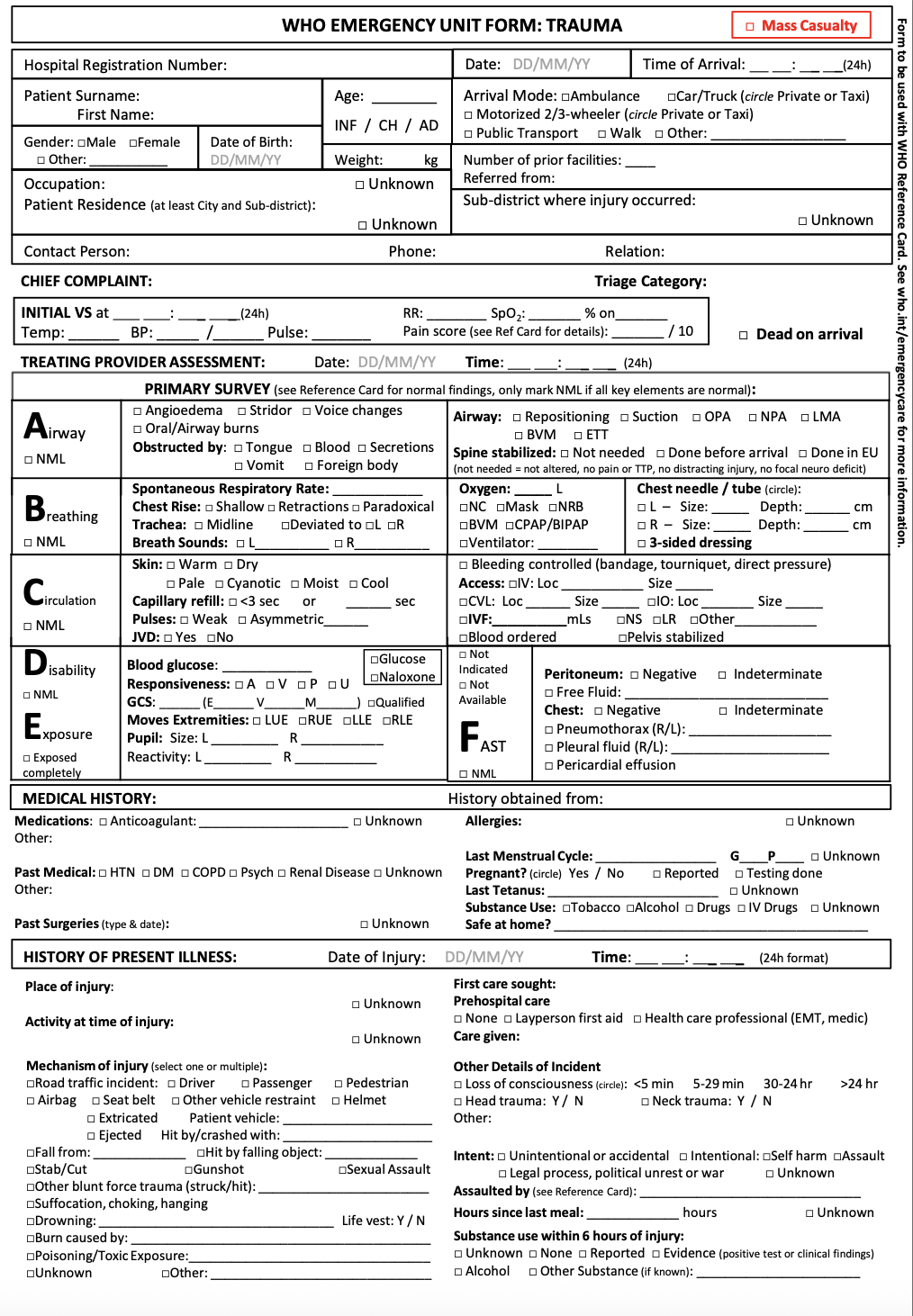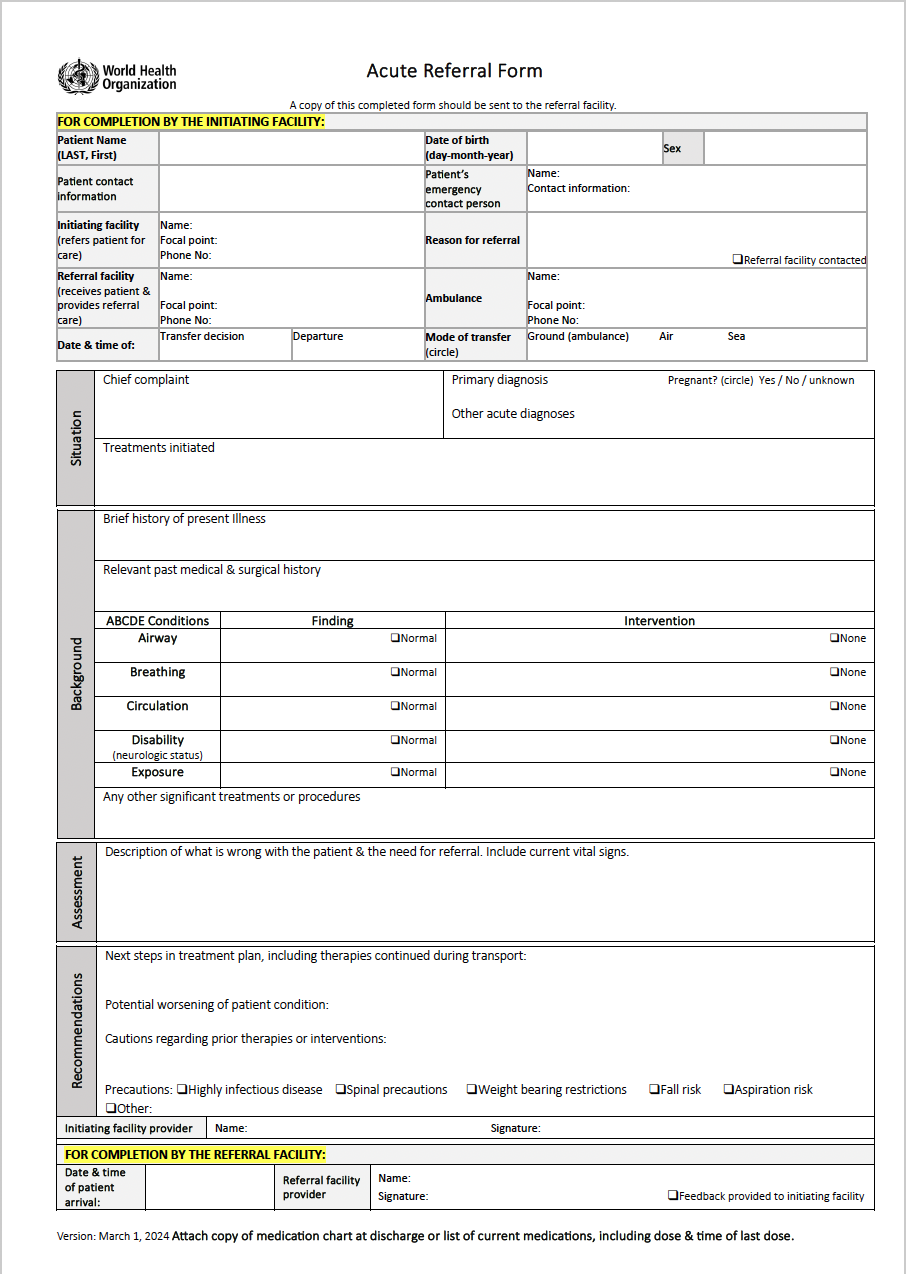
Standardized Clinical Forms
By enhancing the consistency of care, documentation and data collection, standardized clinical forms contribute to reducing preventable deaths and improving overall system planning and responsiveness. High-quality clinical data is essential for driving improvements in patient care and strengthening health systems. Standardized clinical documentation play a critical role in enabling systematic data collection at the point of care. When integrated into clinical registries, this information provides a rich source of data on patient presentation, treatment, and outcomes across the continuum—from prehospital through inpatient care. These registries support real-time analysis, helping to identify gaps in care, monitor performance, and guide targeted quality improvement initiatives.
In the sections below, we have provided the forms and supporting reference cards as PDFs. If you would like to access editable versions of any of these documents, please email emergencycare@who.int.
Contact us






